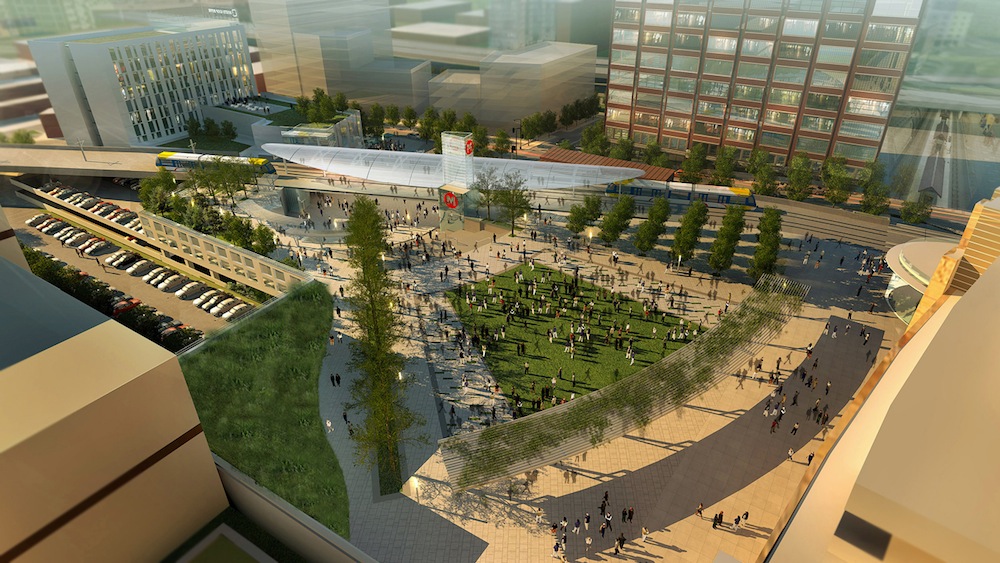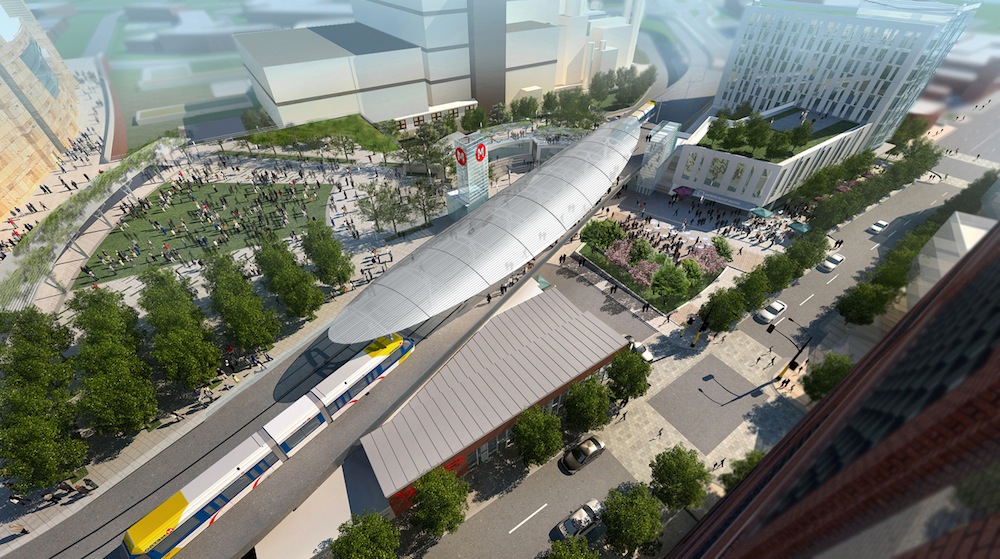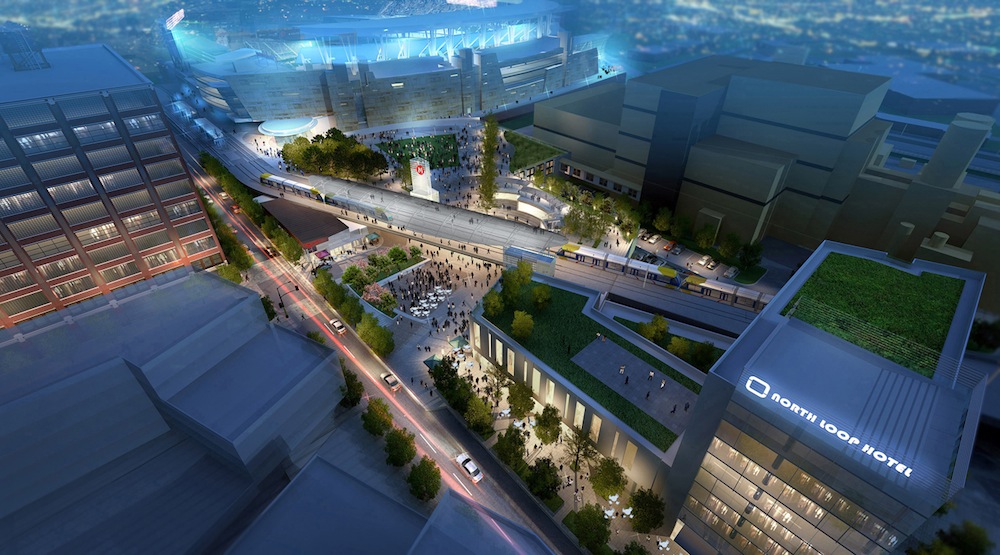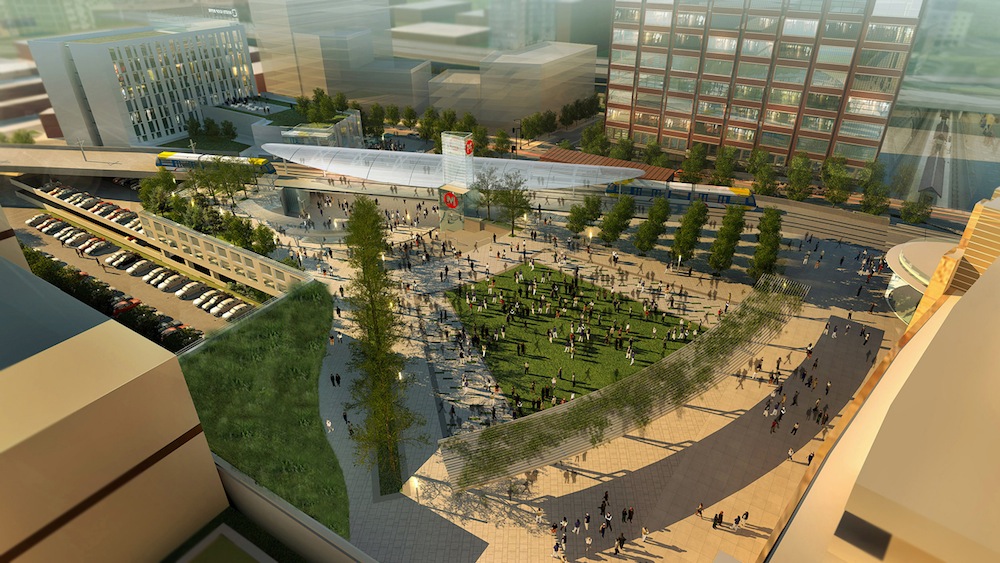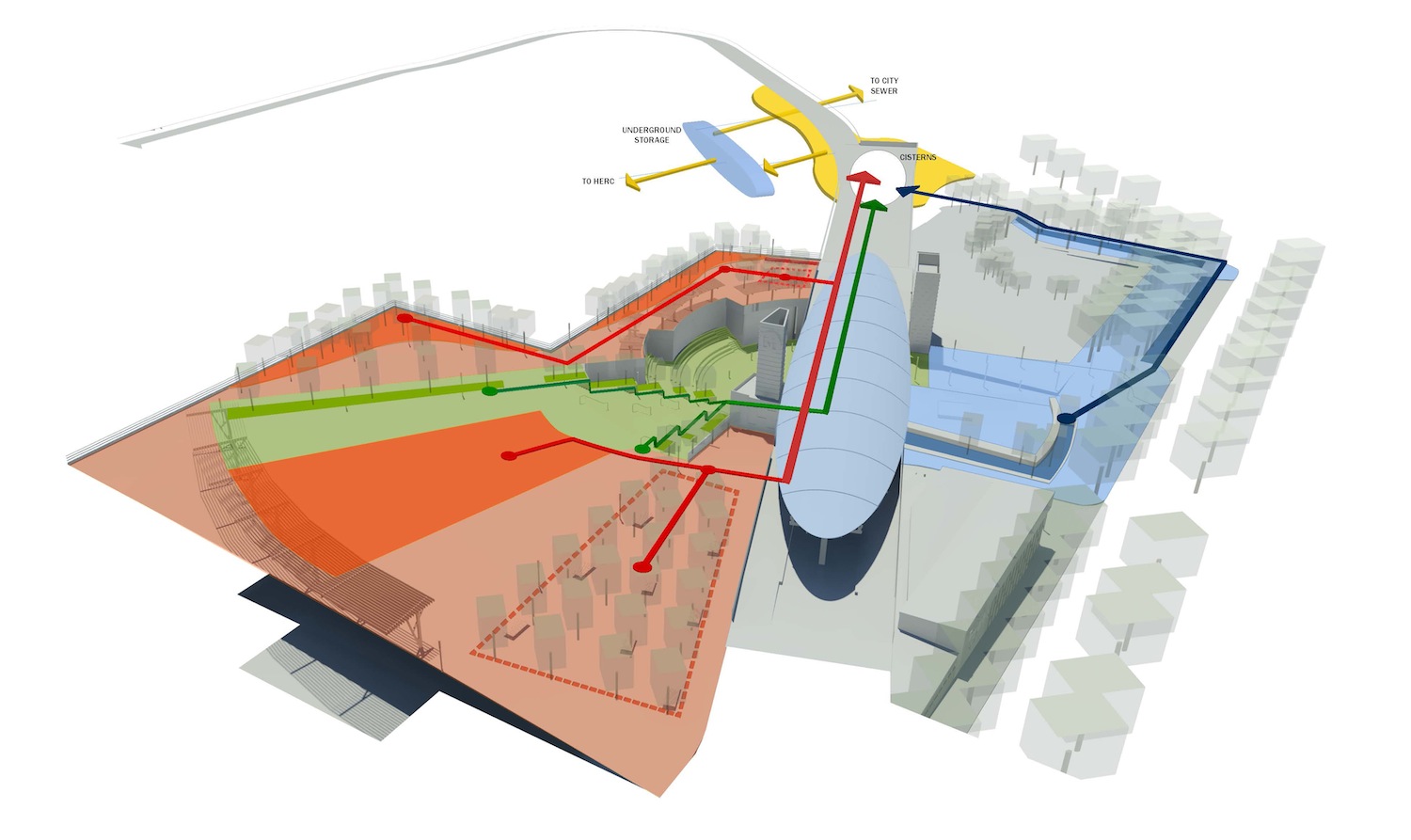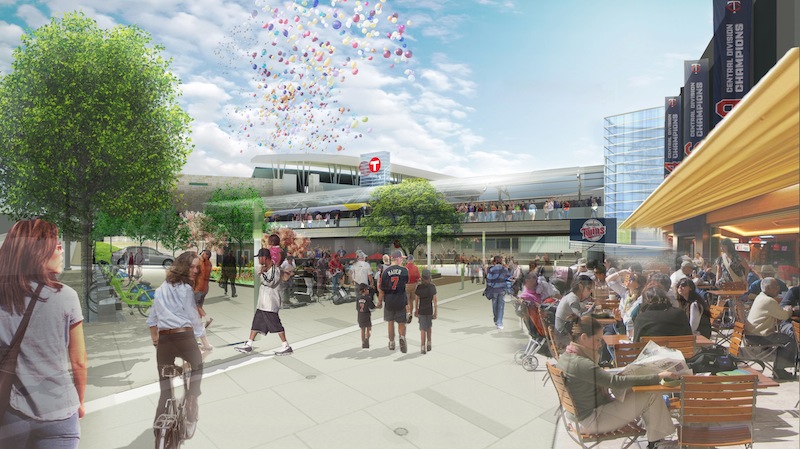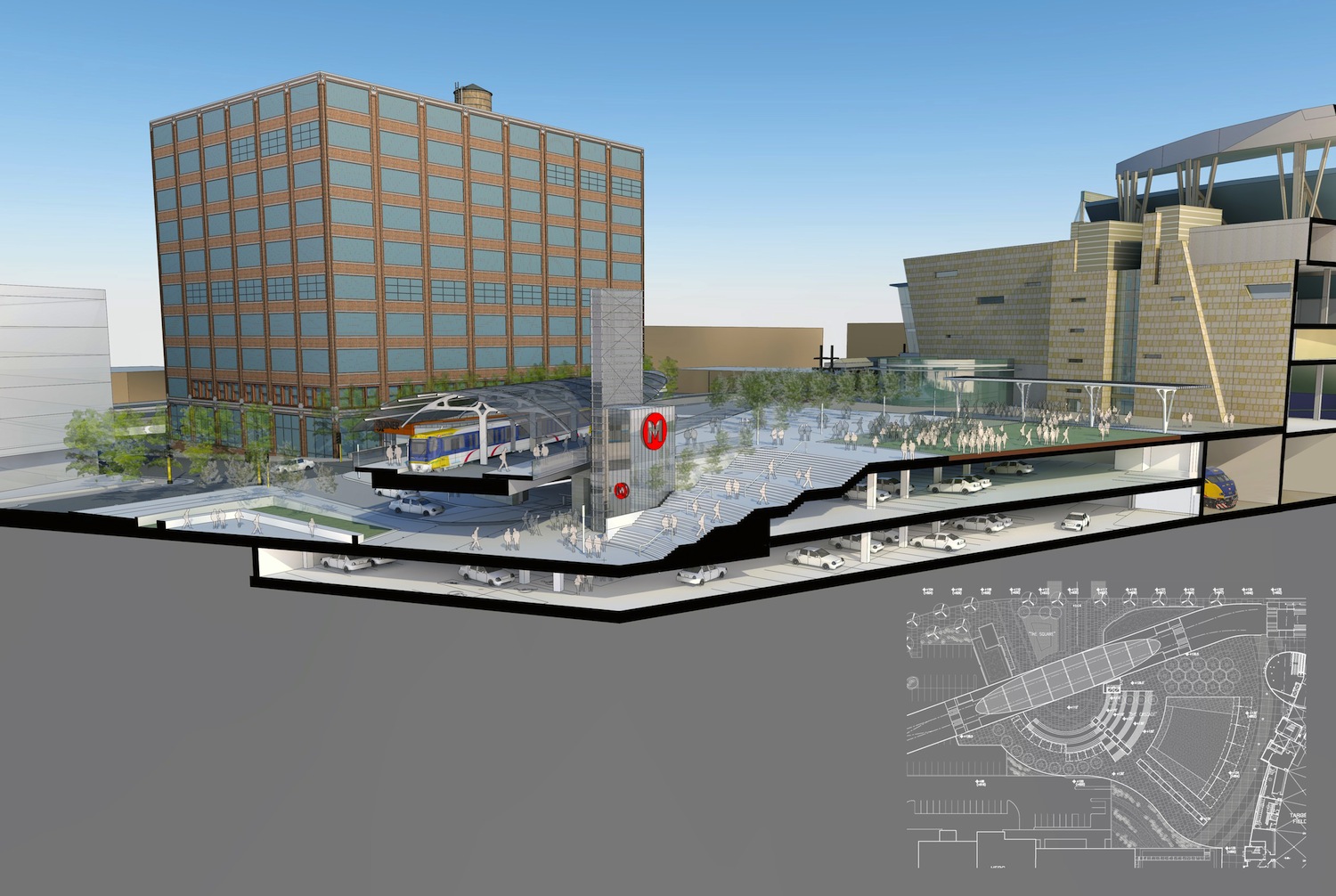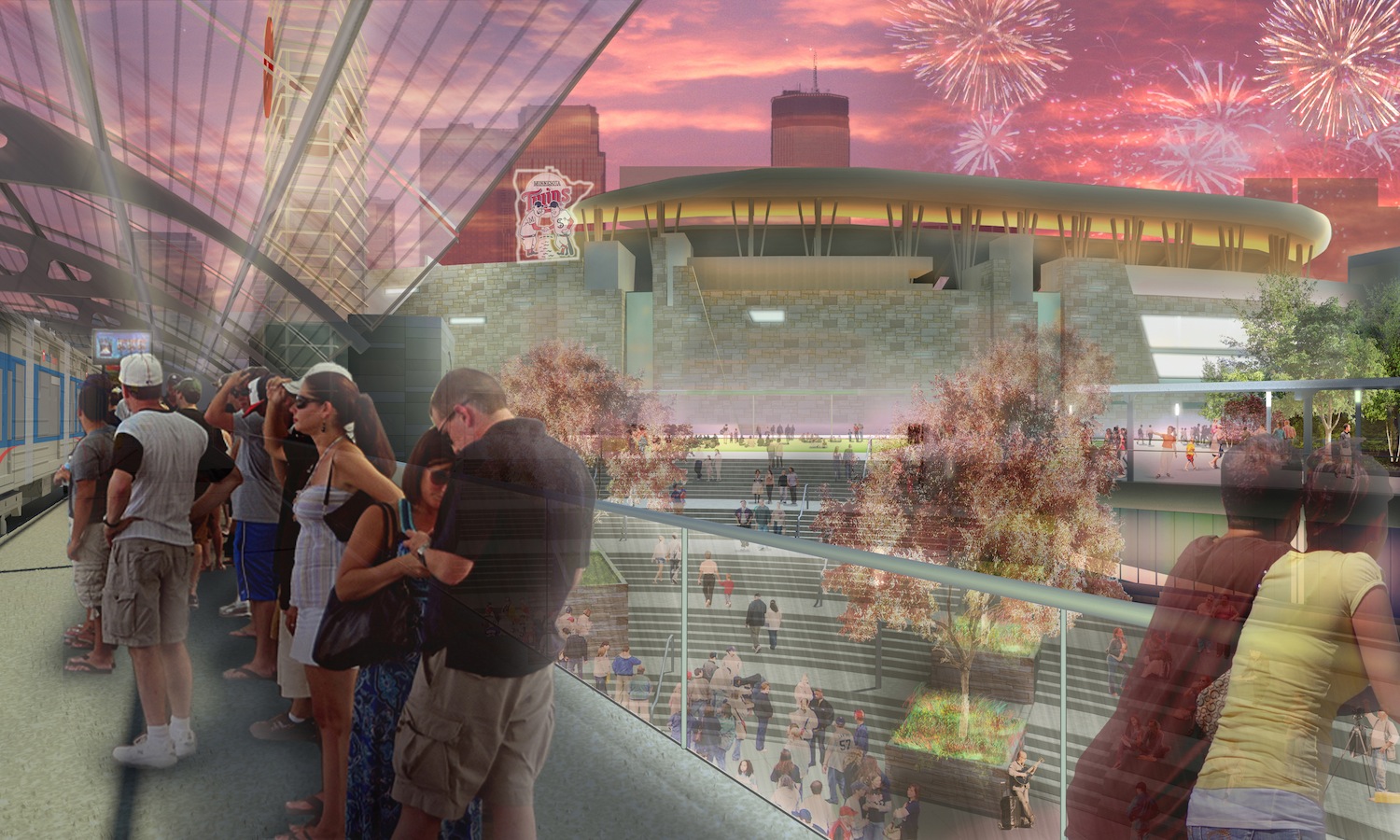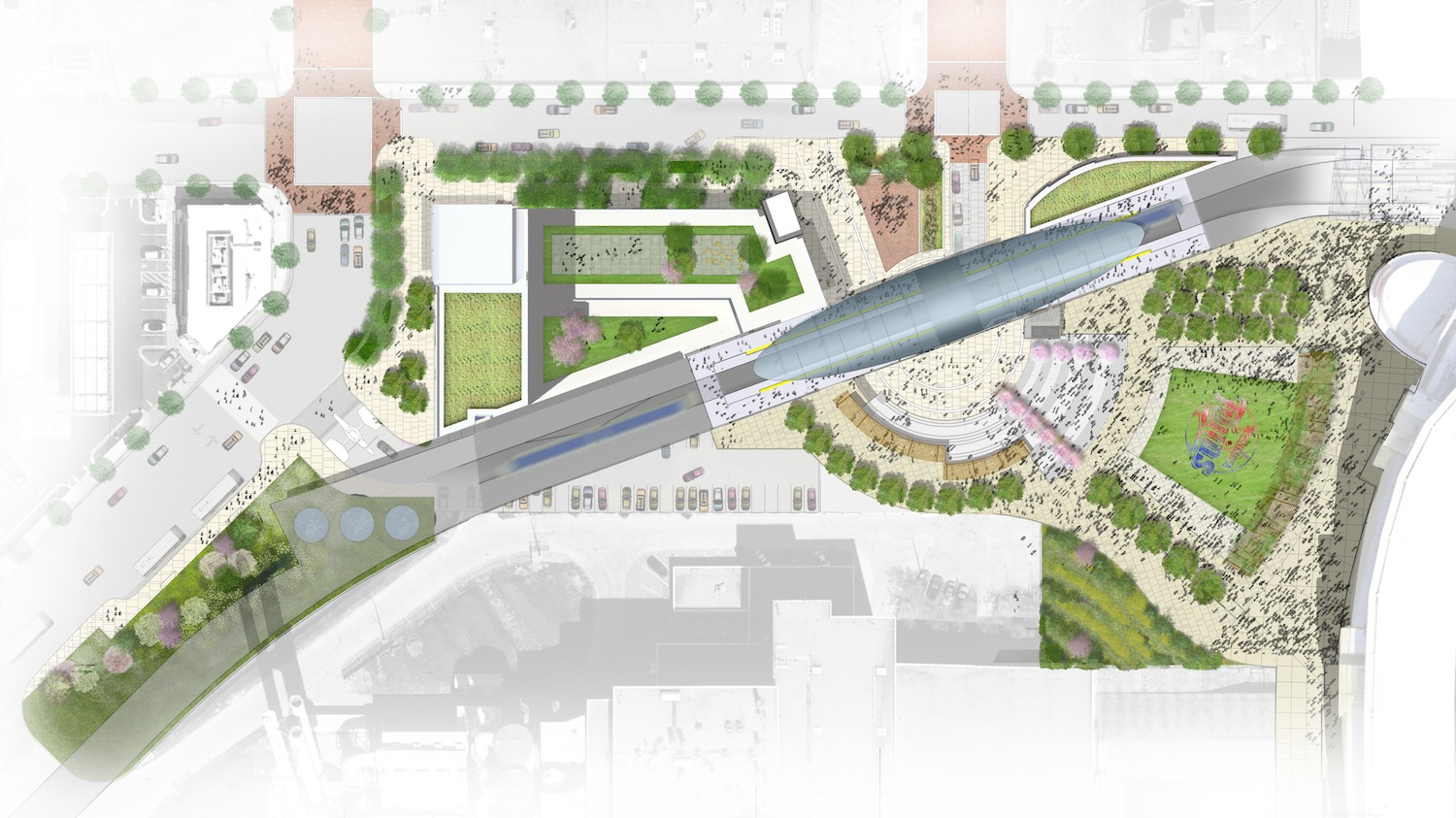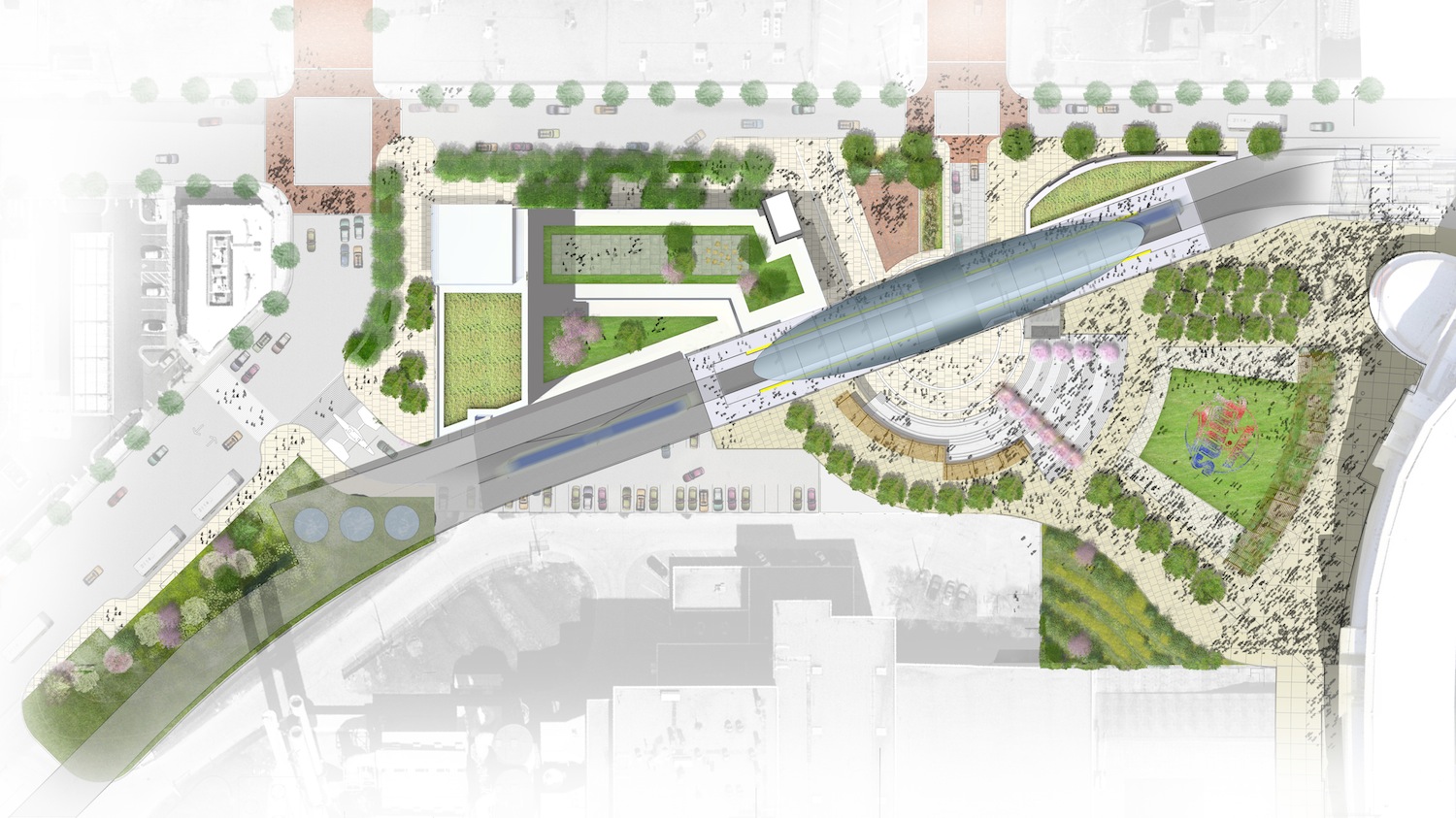Great cities are defined by great places. It is the avenues, squares, grand halls and, of course, the people who inhabit them that give a city its character. A unique blend of architecture, open space, transit, infrastructure, history, culture, and art, the Interchange represents an exciting vision of this character manifest in an urban environment. The goal for the Interchange is to create a place that is uniquely tailored to Minneapolis and its citizens—a place that is iconic, modern, and timeless. It will fulfill people’s aspirations for clean and efficient transportation while also serving as a proud calling card for those who call the city and metro area their home.
The Interchange will serve as the main transportation hub for the northern Minneapolis region. Situated a few blocks from the banks of the Mississippi River, the new station will connect approximately 500 arriving and departing trains daily, more than 1,900 daily bus routes, and hundreds of miles of bike and walking trails. This bold transit project is the result of a partnership between Hennepin County, the Hennepin County Regional Railroad Authority, and the Hennepin County Housing and Redevelopment Authority. It is funded by a mix of federal, state, and local sources, more than half of which comes from local government. During the construction phase, the Interchange will create more than 300 full-time local jobs. The design-build team is being led by EE&K a Perkins Eastman company and Knutson Construction.
Open Transit Design
History has taught us that the design visionaries behind the truly great transit destinations intended to create an infrastructure that functioned beyond as a transit hub. These projects used transit as a vehicle to design iconic spaces—the great hall, the retail passages, and the city sightlines that embody the culture of a city—while creating enormous real estate value. And this is what the City of Minneapolis and surrounding Hennepin County were trying to achieve with the Interchange. Designed by EE&K, a Perkins Eastman company, this nexus of transit and culture is based on a set of design principles called "Open Transit" that have been developed over the last 15 years.
Open Transit is a set of principles for modern station design that incorporate the surrounding spaces and additional modes of transportation to create an overall iconic place. If we are to make cities more sustainable we need to create transit places that will also sustain and enhance urban life and foster development. The Interchange exemplifies this concept in several ways: integration of all available transit modes, an orientation toward real estate development, architectural design that make places, and the integration of culture with transit design. The station will function as a backdrop to performance stage and appeal for non-transit users—people want to be there even if they aren’t using transit.
Making Development the Priority
The design of the Interchange is compact and connects seamlessly with the façade of Target Field, home to the Minnesota Twins baseball team. With such a modest footprint, the Interchange opens up the remainder of the site to maximize development opportunities. By leveraging the value of the 6th Avenue/5th Street intersection, this new development and subsequent ones within the site will help create a key link between the historic North Loop neighborhood and downtown Minneapolis. The Interchange will be a model for how transit design can stimulate economic development and foster environmental stewardship.
Transit centers designed according to the principles of Open Transit are development-oriented, meaning they catalyze investment in a region as much as they follow it. One of the current challenges of the site that the Interchange addresses is the massive influx of people to the area since the introduction of Target Field, which opened in 2010. And the opportunities it creates are even greater than the problems it solves. The team behind the Interchange explored at length how to integrate existing amenities into one new place that capitalized on a new transit line.
As a result, the hub will comprise the Cascade Amphitheater, a Great Lawn, and commuter-oriented retail. Each will provide the community with numerous programming possibilities that will serve the immediate and surrounding area year-round. The cascading staircase that can be used as an amphitheater, gathering space, and vertical transportation to the Great Lawn will draw people from all over for a relaxing picnic or a quiet respite from the bustle of city life.
The Interchange will create a new emblem of civic identity and community pride in its mix of uses by introducing the first of a new generation of facilities that truly integrate transit and culture. Like Grand Central in New York City, it will draw tourists, workers, shoppers and diners. As an oasis in a part of the city where large-scale freeway infrastructure collides with the historic grand warehouses of the North Loop neighborhood, it will fundamentally change Minneapolis and catalyze future development in the area.
Seamless Sustainability
The Interchange in Minneapolis pushes the lessons of Open Transit design even further with a holistic approach to the building as an environmentally responsible community member. It aims to help sustain Minneapolis's urban revival by incorporating features like rainwater collection for irrigation and building use, and a symbiotic use of water with recycling trash. The LEED-certified and Minnesota State-recognized B3 accredited development will use heat from the nearby Hennepin Energy Recovery Center (HERC) to heat sidewalks in the winter months. All concrete removed from the existing site will be re-incorporated back into the project, helping to curb costs related to trucking and the procurement of imported crushed rock. The new HERC administration building on the site is being designed with energy-efficient components, which will cut overall energy consumption by 30%.
Open Transit design represents the future of sustainable transit development in America’s vibrant urban centers, re-envisioning and refashioning the best of the past for the future. The Interchange in Minneapolis will be one of the most efficient demonstrations in the United States of how transportation can integrate with commerce and culture to create rich development opportunities.
Construction on the Interchange continues on schedule, and the project will open in April of 2014.
Related Stories
Architects | May 20, 2016
NCARB survey indicates continued growth of U.S. architects
The number of U.S. architects surpassed 110,000 in 2015, a 2% increase from the previous year.
Multifamily Housing | May 19, 2016
Architect Jean Nouvel designs flood-resilient Monad Terrace in Miami Beach
A man-made lagoon with lush vegetation at the base of the complex is expected to adapt to climate change and rising sea levels.
Building Team Awards | May 19, 2016
Chinatown library unites and serves two emerging Chicago neighborhoods
The 16,000-sf, pebble-shaped Chinatown Branch Library was built at the intersection of new and old Chinatown neighborhoods. The goal is for the building to unite the communities and serve as a catalyst for the developing area.
Building Team Awards | May 19, 2016
NYC subway station lights the way for 300,000 riders a day
Fulton Center, which handles 85% of the riders coming to Lower Manhattan, is like no other station in the city’s vast underground transit web—and that’s a good thing.
Market Data | May 17, 2016
Modest growth for AIA’s Architecture Billings Index in April
The American Institute of Architects reported the April ABI score was 50.6, down from the mark of 51.9 in the previous month. This score still reflects an increase in design services.
Architects | May 16, 2016
AIA and HOK partner to advance Design and Health Research Consortium
The groups' key priority is to identify and develop practice-focused opportunities for funded research, publications, and tools in the area of design and public health.
Senior Living Design | May 16, 2016
Perkins Eastman releases white paper on biophilic design in senior living
The paper highlights some of the firm's top projects that feature biophilic design, a sustainable architecture strategy that connects people with nature.
Architects | May 16, 2016
3 strategies to creating environments that promote workplace engagement
VOA's Pablo Quintana writes that the industry is looking for ways to increase engagement through a mix of spaces suited to employees' desire for both privacy and connection.
Architects | May 11, 2016
AIA to create a resilience curriculum for architects
The program will teach resilient design and decision-making on hazard mitigation, climate adaptation and community resilience.
Retail Centers | May 10, 2016
5 factors guiding restaurant design
Restaurants are more than just places to eat. They are comprising town centers and playing into the future of brick-and-mortar retail.


